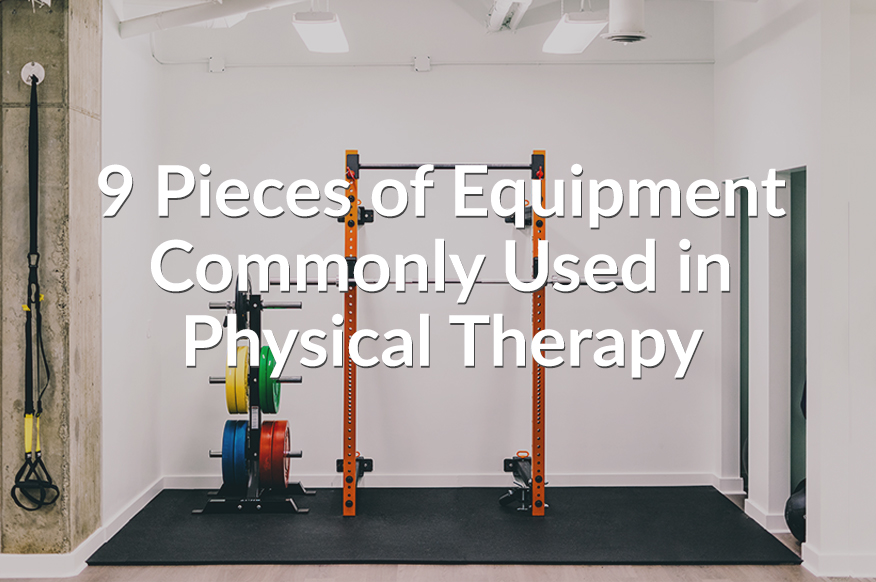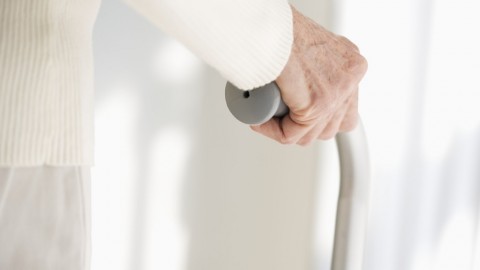When it comes to injury rehabilitation and performance enhancement, physical therapy is often the best option for healing and improving your body naturally. Whether you’re brand new to physical therapy or you’ve had limited experience in the past, you may be curious what sort of physical therapy equipment and tools are used to help you meet your goals.
Just like you wouldn’t want to join a gym with ancient equipment that is shabby or worn, a good physical therapy clinic should offer state-of-the-art tools that offer patients the best in rehabilitation and injury-prevention.
At Therapydia, we pride ourselves on utilizing the latest technology to provide our patients with the best tools for their condition and injury rehabilitation.
Here are nine equipment pieces we frequently utilize in our clinics:
1. Treatment Tables
Every physical therapy clinic needs them, we like ours to be sturdy and comfortable enough for our patients to feel relaxed as we perform hands-on, manual therapy techniques. It’s important for us to consider how effectively we can manipulate the body on the table and to ensure that we’re able to find the precise positioning necessary to treat injuries and provide pain-relief.
2. Exercise Balls
Great for stretching, exercise balls allow for injury rehabilitation of specific areas of the body and can be used to demonstrate exercises that the patient can also do at home (as many of our patients have an exercise ball hanging around somewhere). Similar to some of the other equipment and tools we use in physical therapy treatments, exercise balls are multi-functional, offering a range of difficulty levels depending on the stretch or exercise and the patient’s particular condition.
3. Resistance Bands
Inexpensive, portable and extremely versatile resistance bands are frequently reached for by physical therapists. Physical therapists use resistance bands to treat injuries in combination with other methods because of their adaptability in targeting a variety of major muscle groups. These small, thick rubber band-like tools allow you to continually progress your exercises by upping the ante and adding more resistance, further challenging your muscles without the added nuisance of additional weights.
4. Treadmills
An essential tool to getting the blood flowing, our physical therapists also utilize treadmills to gauge a patient’s range of motion, gait and posture. Our individualized Run Assessment involves a thorough exam of strength, flexibility and movement patterns to help shape custom exercise training plans for all patients (from seasoned runners to newbies).
5. Exercise Bikes
Stationary bikes are a great, low-impact fitness tool that helps our physical therapy patients build strength and stay healthy. Riding an exercise bike also helps with flexibility and can help reduce pain symptoms, allowing many of our patients to keep active throughout their healing process.
6. TRX
Another one of the most versatile pieces of equipment that we have, is the TRX. Used for suspension training (all bodyweight training), it’s incredibly safe for all phases of rehabilitation and appropriate for people of any age group. The TRX allows you to make your exercise movements really simple or really challenging, depending on your personal condition and needs.
With the TRX, you can target your upper body—great for those with shoulder issues who need to focus on shoulder blade strengthening—or lower body—someone with knee pain for example will be able to do a lot of assisted types of squats and can use the TRX as a helpful tool to progress from two legs to one. It’s also great for core work. What else is great? It’s portable and really quite simple: This amazing physical therapy tool isn’t much more than a couple of ropes.
7. Pilates Reformer
In addition to being used for Pilates workouts, the reformer is something that is used frequently in many of our physical therapy clinics. For one thing, it’s low-impact and therefore very easy to adjust the intensity to match a patient’s condition (it has the ability to go from 25 to 75 pounds of resistance). You can perform upper body, lower body and core work.
For those who can’t stand up to do a squat without pain, the reformer comes in handy to help them do a sort-of modified leg press. This modification can be highly effective in helping patients get the leg strength they need to squat. It’s a super effective tool used to progress patients to more functional, weight-bearing exercises.
8. InBody Body Composition Analyzer
If a physical therapy patient has goals of weight loss or strength training, the InBody machine is great for them. This machine can provide important data to help you structure your nutrition and training regime to effectively meet your goals.
The InBody Body Composition Analyzer provides your basal metabolic rate (the number of calories that you burn at rest) which is important to know before you work out. This will help you know how much you need to eat in relation to how much you need to burn.
Rehab-wise, the limb segmental breakdown (right arm vs. left arm, right leg vs. left leg) is extremely helpful. If you have an injured leg, especially if it’s chronic, then there’s likely going to be some changes there in terms of your muscle mass.
The InBody provides objective data that you can use to measure over time to make sure that we’re focusing on the right elements during your rehab and making things challenging enough to gain back muscle.
Even cooler, this is all done through an electrical current (there are two sensors in each hand and two sensors in each foot). As you stand on what feels like a normal scale, the current goes through your body to determine what’s muscle, what’s fat and what’s bone. Unlike hydrostatic body fat testing, which requires you to get into a bathing suit, the InBody only requires you to take off your shoes and socks. You can gain insight into what you’re really made of in just a couple of minutes!
9. Keiser Functional Trainer
The Keiser Functional Trainer uses pneumatic resistance, which requires muscles remain active throughout the entire movement with minimal shock to the joints. Unlike standard cable machines, the Keiser Functional Trainer allows testing and training for power output. When you do a repetition on the Keiser, it gives you a reading in Watts that indicates the rate at which your work was done (essentially the speed of your movements). This can be very valuable in physical therapy treatment, especially for athletes who perform frequent rotational movements such as golf and softball/baseball.
With the Keiser, your physical therapist can measure power one side at a time, making it a valuable tool for injury prevention. We all know the importance of symmetry; with this technology, we can test rotation to the right/left and locate deficits on either side, giving you the information you need to know what to train for.
The machine is also effective for the lower body. If you’re a basketball player and you want to be able to jump off of both legs, we can test each of your legs one at a time to find out if they produce the same amount of power.
The Keiser machine is ideal for use in all phases of injury rehabilitation. For those who are still in pain, the Keiser allows for super light resistance. For those who are in the “return to sport” phase of their rehabilitation, we can receive objective numbers in order to clear you back to your sport.






